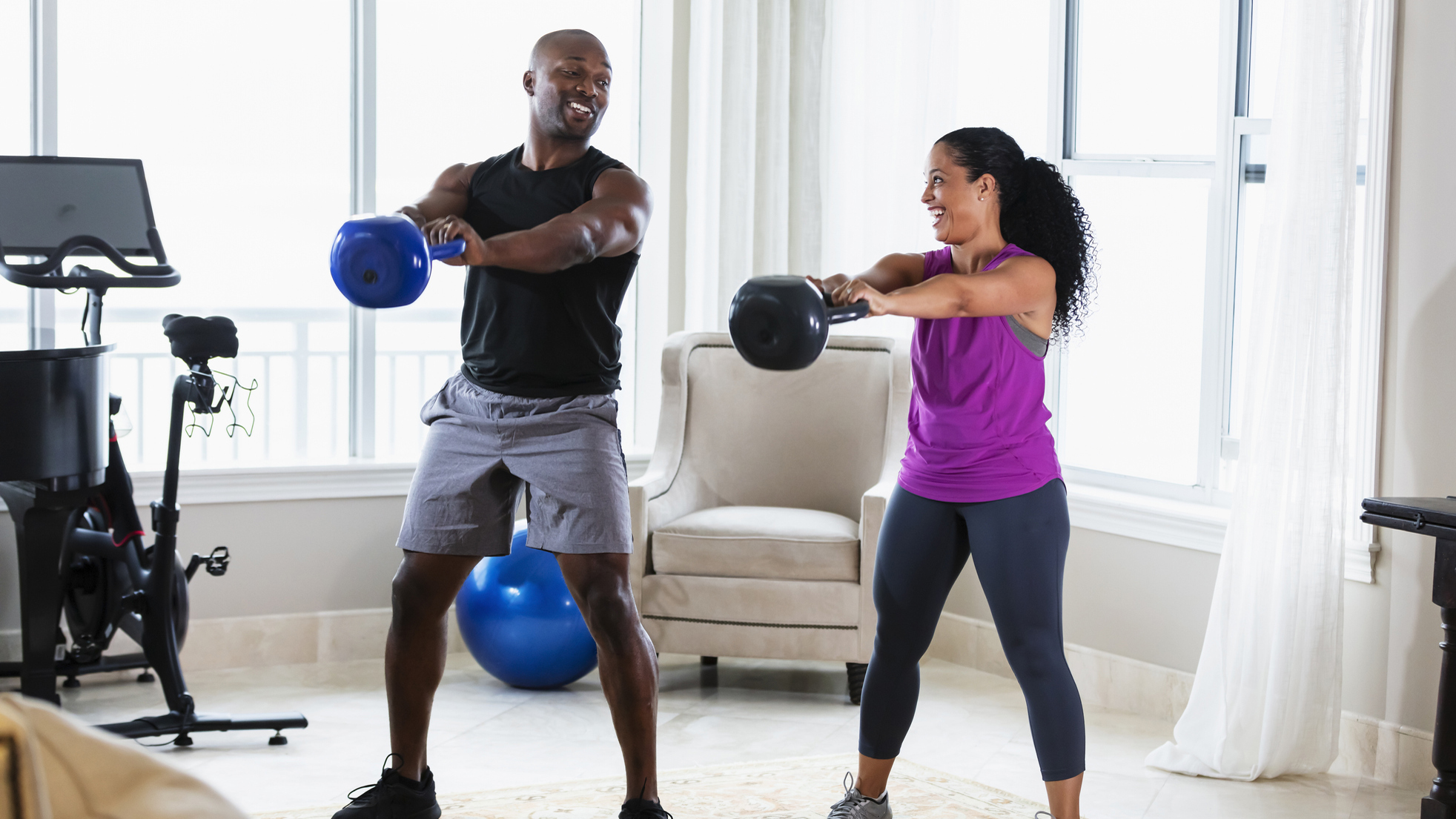Do kettlebell swings work abs?
Tired of crunches and planks? Swinging a kettlebell might be a better option if you want to torch your abs


If you’re on a mission to sculpt your core, you might be wondering if a kettlebell swing could help you tone and tighten your stomach. This reasonably low-impact, standing exercise involves using one of the best kettlebells and swinging it through your legs and back up to shoulder height.
It’s believed to work your posterior chain and, according to Luke Hughes, CEO and Co-Founder of OriGym, this total body compound move does indeed work your abs as well. Here’s how the move fires up your trunk.

Luke Hughes is the CEO and Co-Founder of OriGym. Holding a first-class degree in Sport and Exercise and an MSc in Sport and Nutrition, he is also qualified as a Level 4 Personal Trainer with various specialist credentials covering the entire spectrum of health, fitness and business.
Are kettlebells good for abs?
Kettlebell swings are known as compound exercises, which means they work multiple groups of muscles, including your glutes, hamstrings, shoulder muscles and more. This exercise also works a bunch of muscles surrounding your core, including the muscles we commonly think of as the abs.
Your abs are also made up of multiple muscle groups, including the rectus abdominis (known more informally as your six pack) as well as the likes of your internal and external obliques. Studies have shown that kettlebell swings activate both the rectus abdominis and the external obliques, along with deep core muscles like the erector spinae.

But are kettlebells better for core activation than other bits of kit? Hughes argues that they are: “Unlike barbells and dumbbells which displace their weight evenly across their handles and center their weight in the user’s hands, kettlebells have a unique design with an off-set center of mass,” Hughes explains.
This means their off-center weight is positioned away from the user’s hand, around 6-8in from the handle, requiring users to work harder by engaging their core and using their ab strength to keep them under control.
Should I do kettlebell swings every day?
Like with any exercise, balance is key. “This is particularly the case for beginners or those that don’t practice proper form and technique when weightlifting,” Hughes explains.
Start your week with achievable workout ideas, health tips and wellbeing advice in your inbox.
“Although there are many benefits of daily kettlebell swings, from increasing your functional strength to improving your mobility and range of motion, it’s important to maintain a balance between weightlifting often enough to see results, but also leaving enough time for recovery,” Hughes adds.

Along with helping to prevent injury, enable your muscles to grow and help to optimize your performance, rest days are a critical part of any fitness regime.
“If you overtrain, this could lead to overuse injuries, which could stop you from lifting weights for an even longer period of time,” Hughes explains.
How many times should you do kettlebell swings?
According to Hughes, if you’re performing kettlebell swings using a heavy weight, you shouldn’t complete this exercise more than two to three times per week. “This ensures that you have a rest day in between each session, which is crucial for growth and recovery,” he adds.
One way of achieving this balance is through the use of a workout split. Unlike a total body session, a workout split refers to the process of splitting up your training across the week.

And Hughes agrees. He says: “A useful approach is to plan your kettlebell exercises a week or month with split muscle days, with emphasis on the muscle group you’re looking to target. This is so the body is receiving an equal amount of attention and particular muscle groups aren’t being overly worked and becoming exhausted.”
The weight of the kettlebell is another point to give some serious consideration to. Research published in the Korean Journal of Sport Biomechanics looked into how the body reacted to different kettlebells whether it was 30%, 40% or 50% of the participants’ body weight.
The results? Researchers concluded: “For beginners who start kettlebell exercise, swing practice should be performed with 30% of body mass”. The researchers found that higher weights were ‘more likely’ to lead to injury in even highly trained individuals.
Becks is a freelance journalist and writer with more than 7 years of experience in the field. She writes health and lifestyle content for a range of titles including Live Science, Top Ten Reviews, Tom’s Guide, Stylist, The Independent, and more. She also ghostwrites for a number of Physiotherapists and Osteopaths.
Health has been a big part of Becks’ lifestyle since time began. When she’s not writing about the topic of health, she’s in the gym learning new compound exercises. And when she’s not in the gym, she’s most probably reading.
